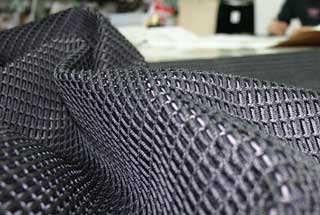ESA‘s Innovation Triangle Initiative is working on a project to create innovative materials to build deployable structures and booms on spacecraft to support solar panels, antennas and, in the future, solar sails.
Solar panels for energy production on spacecraft are folded during launch and then unfolded once in orbit to many times their launch size. Other spacecraft elements need long booms, which can be folded during launch and then take a much larger final form once in space.

In the future, huge “sails” powered by solar particles could be used to push spacecraft through space. They would have to cover an area of at least 10 000 square metres and need ultra-light and large rigid structures of booms to hold them in place.
Grado Zero Espace came up with the idea of using a smart textile to construct the requested booms.
The nematic elastomer nanocomposites are prepared by spreading carbon nanotubes on to a rubber matrix, with the nanotubes pre-aligned in one direction. The material’s properties are different along this direction. When an electric field is applied, the nanotubes try to re-orient themselves and cause a change in shape of the whole rubber composite. This shape change was successfully exploited in a membrane prototype, demonstrating the potential use for reversible and irreversible deployment of structures in space.
Via Eurekalert and ESA.
